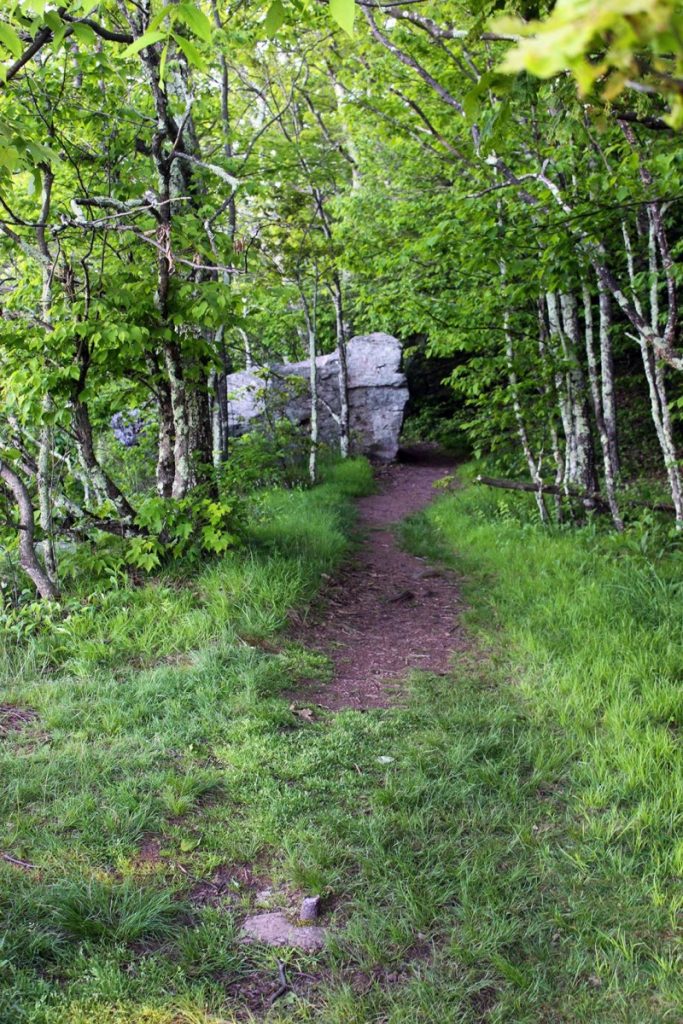“Talk of mysteries! — Think of our life in nature, — daily to be shown matter, to come in contact with it, — rocks, trees, wind on our cheeks! The solid earth! The actual world!”
― Henry David Thoreau, “The Maine Woods”
 As I write this, I am sitting on the futon in our TV room, black flop-eared dog curled up beside me and soft music coming from my laptop. I would rather be outside, but there is indoor work to do.
As I write this, I am sitting on the futon in our TV room, black flop-eared dog curled up beside me and soft music coming from my laptop. I would rather be outside, but there is indoor work to do.
That said, I can sit like this for just so long before I must close the computer and head out to the little wood beside our house. There I’ll check on the den some animal dug several years ago or pull winter weeds or search for mountain laurel seeds for Team Flora to plant in the greenbelt. It’s something I have to do.
Especially in times of grief or trouble, such an action seems imperative indeed. There comes an inexplicable urge to run my hands through the dirt or move a pile of rocks. There’s an almost physical desire to lean against a cedar elm and listen for the sounds of birds. When my mother died, for example, I felt the need to build a compost pile in her backyard; there was something comforting in handling those elements, with the knowledge they would one day be transformed. Years earlier, when my husband’s older daughter died, the two of us retreated to Little Arkansas, where we could watch the Blanco River flowing by and feel the permanence of rocks beneath us. It was a necessary escape.
But was it, in fact, an “escape” in the way we normally think of the word? I would argue that it wasn’t. “Escape” implies running from something. This was a running toward.
I have no way of knowing this, but I suspect that the number of visitors using the natural areas in San Marcos is going up by the day. Faced with chaos and uncertainty, people require the space they find there—space to breathe, space to think about something besides the news, space to feel human again. I believe they are searching for what is “real.”
My friend Scott Slovic, an ecocritic and recently retired professor of literature and environment from the University of Idaho, has written about that need in his 2008 essay collection Going Away to Think. Environmental literature, and perhaps all of art in general, he says, reflects “the urge to achieve contact with ‘the real,’ with that which is authentic and true.” When the world around us feels like Jell-O, we yearn for something solid, something that isn’t subject to the whims of politics or the quirks of mean-spirited men.
In 1968, Edward Abbey famously wrote about this experience in Desert Solitaire, his account of life as a park ranger in what was then Arches National Monument. He admits, “I am here not only to evade the clamor and filth and confusion of the cultural apparatus but also to confront, immediately and directly if it’s possible, the bare bones of existence, the elemental and fundamental, the bedrock which sustains us.” In short, he wanted to encounter “the real.”
When I think about our natural areas in the context of current events, I realize what a treasure they are. The trees, the rocks, the trails that run through it all—they are not just a means for recreation. They are a means for grounding ourselves in something we can’t deny. A rock is a rock, even if someone insists that it’s a tree. We can feel its weight, its hardness, its sharp edges and know exactly what it is. We know that rock is real.
So take these musings as a tribute to our greenbelt and a thank you to those among you who tend to the trails each week. Your work is more important than you know.
